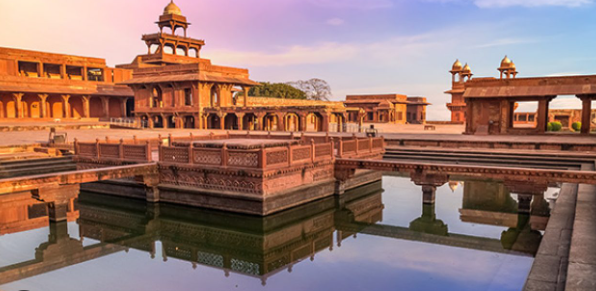Sanchi Stupa is one of the most important Buddhist sites in India, located in the state of Madhya Pradesh. It is a UNESCO World Heritage Site and a popular tourist destination, known for its magnificent stupas, monasteries, and other structures. The site is an important pilgrimage destination for Buddhists from all over the world, who come to pay their respects to the Buddha and his teachings.
The Sanchi Stupa was originally built in the 3rd century BCE by the Mauryan Emperor Ashoka, who is considered one of the greatest rulers in Indian history. Ashoka was a follower of Buddhism and built several stupas and monasteries to spread the teachings of the Buddha. The original stupa was a simple brick structure, but it was later enlarged and embellished by later rulers and patrons.
The Sanchi Stupa is a hemispherical dome-shaped structure, which is an important symbol in Buddhist architecture. The stupa is surrounded by a stone railing, which has four gateways or toranas. These gateways are decorated with intricate carvings and sculptures, depicting scenes from the life of the Buddha and his teachings.
The stupa also has a central chamber, which contains relics of the Buddha and his disciples. The chamber is accessed through a narrow stairway, and it is considered the most sacred part of the stupa. The stupa is a symbol of the Buddha’s enlightenment and his teachings of compassion, wisdom, and non-violence.
Apart from the main stupa, there are several other structures at the Sanchi site, including several smaller stupas, monasteries, and temples. The monasteries were used by Buddhist monks for meditation and study, while the temples were used for worship and prayer. The structures are adorned with intricate carvings and sculptures, depicting scenes from the life of the Buddha, his disciples, and various Buddhist deities.
The Sanchi Stupa is not just a collection of buildings and structures; it is a symbol of the rich Buddhist heritage of India. The site is a testament to the spread of Buddhism in India and the world, and the influence of Indian culture and philosophy on other civilizations. The site is also a reminder of the secular and pluralistic nature of ancient Indian society, where people of different religions and cultures could coexist in harmony.
In recent years, the Sanchi Stupa has undergone several restoration and conservation efforts, to preserve its rich heritage for future generations. The site has also been developed as a tourist destination, with facilities for visitors, such as a museum, audio guides, and a souvenir shop. The site is a must-visit for anyone interested in history, culture, and spirituality.
In conclusion, the Sanchi Stupa is an important symbol of India’s Buddhist heritage and a UNESCO World Heritage Site of great historical and cultural significance. The stupa and its associated structures are a testament to the spread of Buddhism in India and the world, and the influence of Indian culture and philosophy on other civilizations. The site is a must-visit for anyone interested in history, culture, and spirituality, and a reminder of the rich and diverse heritage of India.










